
EXHAUST systems are more efficient than ever and, with stainless- or black-steel construction, they rarely rust out.
This was first published in 4x4 Australia’s July 2013 issue.
Yet older 4X4s, with full or partial mild-steel exhausts, still suffer from corrosion, and most petrol-powered 4X4s have a catalytic converter in their exhaust system. Over time, this will become partially blocked as the ceramic material inside slowly crumbles. This can cause restriction and reduce performance.
We joined John Chamoun at Precision Mufflers in Croydon, NSW, as he custom-fabricated a new exhaust system from the engine pipe back on an XJ Jeep Cherokee.
 As well as the Cherokee’s muffler and tailpipe, it was also decided to replace the cat converter with a high-flow, stainless-steel metal core cat. The metal cat flows at about 97 percent efficiency, compared with 60 percent for a new ceramic cat.
As well as the Cherokee’s muffler and tailpipe, it was also decided to replace the cat converter with a high-flow, stainless-steel metal core cat. The metal cat flows at about 97 percent efficiency, compared with 60 percent for a new ceramic cat.
The bolt-in flanges ahead of and behind the catalytic converter were left in place in case the system needed to be unbolted later – it would be difficult to remove if it was welded together. Then the old catalytic converter was cut out using a gas cutter. The new 2.5-inch diameter high-flow cat was shorter than the OE Jeep item it replaced, so John had to cut a short length of steel pipe and weld that to the cat.
Once the cat was welded into place, the rear muffler and tailpipe were cut out and a high-flow muffler, resonator and 2.25-inch diameter exhaust pipe installed. John used a pipe-bending machine to shape the tailpipe section, using the old pipe as a template.
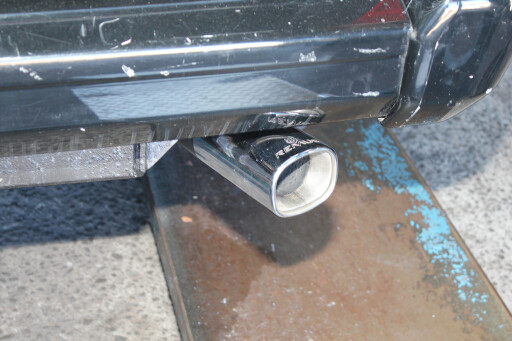 The final fitment was a Remus exhaust tip, designed to reduce noise with its baffled internals. This vehicle is intended for fire trails and on the beach, but if rocky tracks are on the cards the exhaust tip will need a re-think as it may affect departure angle.
The final fitment was a Remus exhaust tip, designed to reduce noise with its baffled internals. This vehicle is intended for fire trails and on the beach, but if rocky tracks are on the cards the exhaust tip will need a re-think as it may affect departure angle.
After a few hours on the hoist, there’s now a freer-flowing, meaty-sounding exhaust system to aid efficiency.
Here's how to do it:
1. Prefab parts include free-flow muffler, high-flow catalytic converter and exhaust tip.
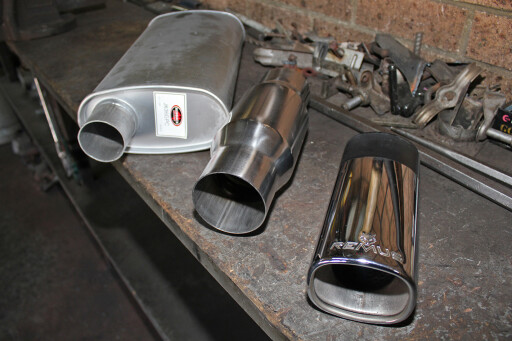 2. The old cat is cut off using a gas cutter.
2. The old cat is cut off using a gas cutter.
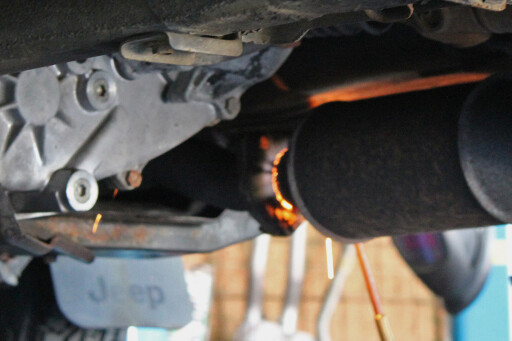 3. The old cat will be replaced by the metal cat, which flows 30 percent more air.
3. The old cat will be replaced by the metal cat, which flows 30 percent more air.
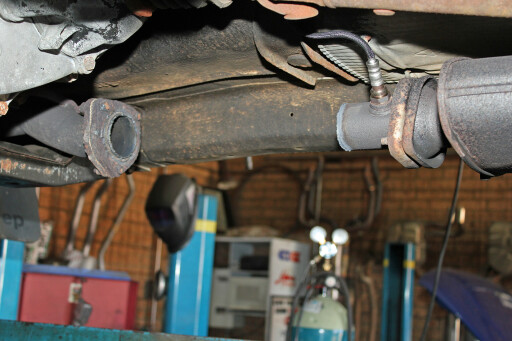 4. The weld area is heated and cleaned before the new cat is MIG-welded in.
4. The weld area is heated and cleaned before the new cat is MIG-welded in.
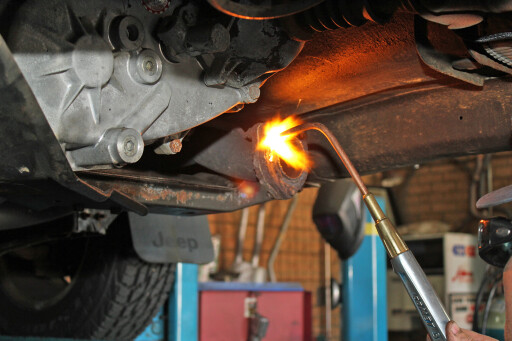 5. The new cat is shorter so an extension tube is cut from a length of pipe.
5. The new cat is shorter so an extension tube is cut from a length of pipe.
 6. The join is flared so it will slip over the existing pipe.
6. The join is flared so it will slip over the existing pipe.
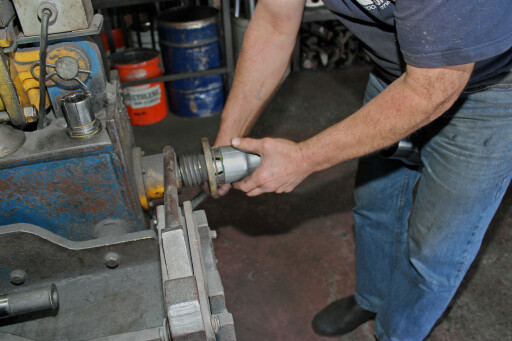 7. The extension joint is welded to the cat.
7. The extension joint is welded to the cat.
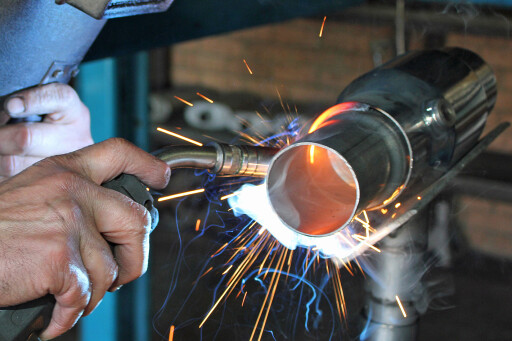 8. The cat is welded into place on the existing stainless-steel exhaust pipe.
8. The cat is welded into place on the existing stainless-steel exhaust pipe.
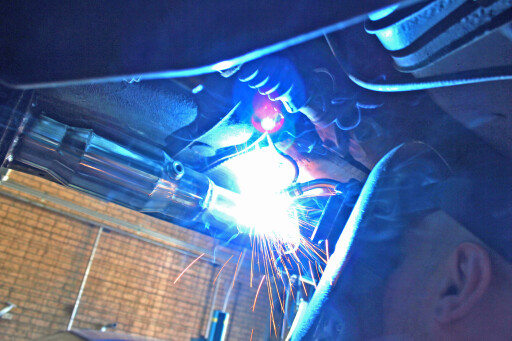 9. The old muffler and tailpipe are cut off.
9. The old muffler and tailpipe are cut off.
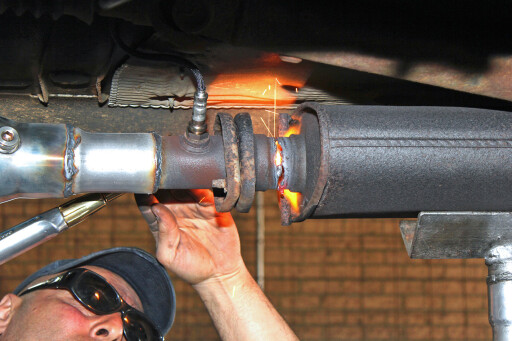 10. The new tailpipe section is shaped using the old one as a template.
10. The new tailpipe section is shaped using the old one as a template.
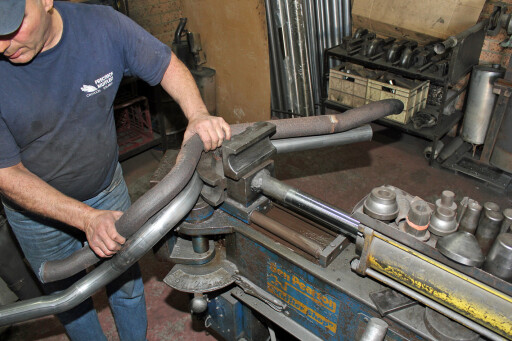 11. The new muffler and tailpipe are welded into place.
11. The new muffler and tailpipe are welded into place.
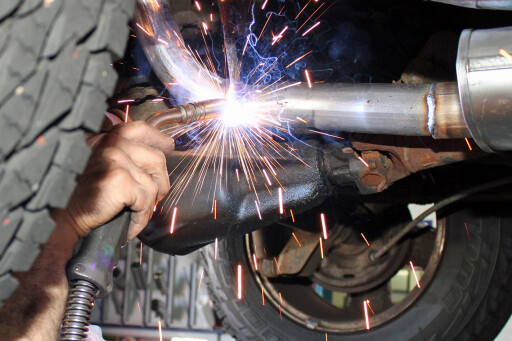 12. The Remus tailpipe tip (with integral resonator) is welded into place.
12. The Remus tailpipe tip (with integral resonator) is welded into place.
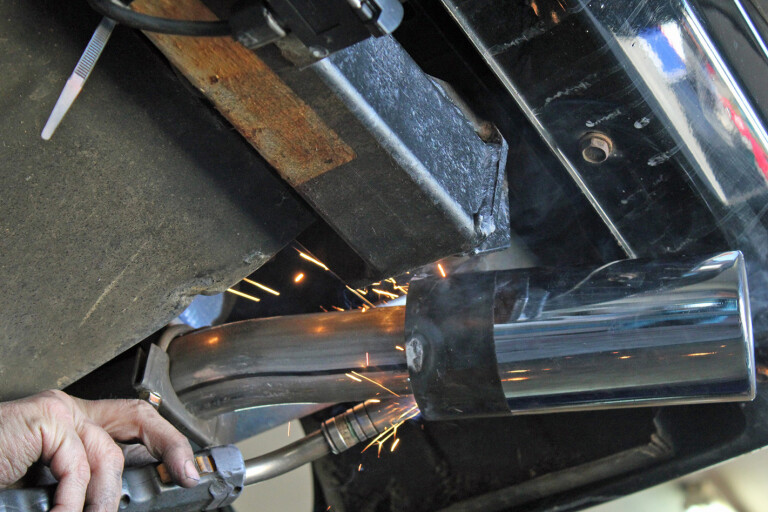

COMMENTS